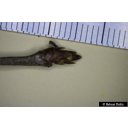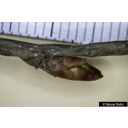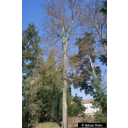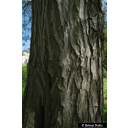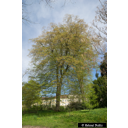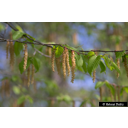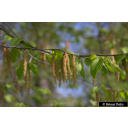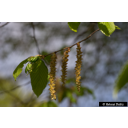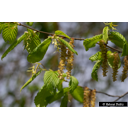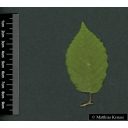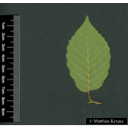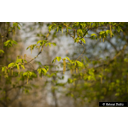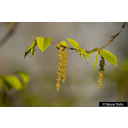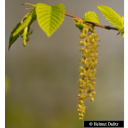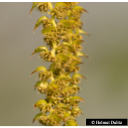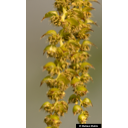Useful information about the taxon (species, subspecies, variety...)
Carpinus betulus L. 1753
Betulaceae
(APG IV)European hornbeam, common hornbeam
Taxon concept: The Plant List (2014), version 1.1
Distribution: Europe, Caucasus, Turkey, Iran
Size: 6 - 25 (m)
Carpinus betulus L. - Accepted: Carpinus betulus L. bei Zander 2008; Familie: Betulaceae (Zander 2008)Carpinus betulus L. - Accepted: Carpinus betulus L. bei The Plant List (2010); Familie: Betulaceae (APG III)Carpinus betulus L. - Accepted: Carpinus betulus L. bei The Plant List (2014), version 1.1; Familie: Betulaceae (APG III)Carpinus betulus L. - Accepted: Carpinus betulus L. bei The Plant List (2010); Familie: Betulaceae (APG IV)Carpinus betulus L. - Accepted: Carpinus betulus L. bei Schmeil-Fitschen 2019; Familie: Betulaceae (APG IV)Carpinus betulus L. - Accepted: Carpinus betulus L. bei BfN Checklist Flora DE; Familie: Betulaceae (APG IV)Carpinus betulus L. - Accepted: Carpinus betulus L. bei World Flora Online - APG IV (Angiosperms); Familie: Betulaceae (World Flora Online - APG IV (Angiosperms))
- Color of flower
- green
- Flowers
- monoecious; male and female flowers arranged in catkins
- Flower ecology
- wind-pollinated (anemophilous)
- Life form
- woody, tree
- Leaves
- dark-green, at the base somewhat heart-shaped; alternate
- Foliage persistence
- deciduous
- Fruits
- nut fruit with tripartite, aliform involucre
- Fruit ecology
- wind-dispersed (anemochorous)
- Soil conditions
- tolerant to a wide amplitude of moisture levels; preferentially on fresh to moderately dry, moderately nutrient-rich, usually slightly acidic, humus-rich, deep sandy and loamy soils
- Light conditions
- shade-loving tree (partial to full shade plant)
- Root type
- deep-rooted
- Natural occurrence (habitat)
- grass- and herb-rich bottomland deciduous forests, oak-beech forests, mixed forests, hedgerows, forest edges, shrubs; oak-hornbeam forest; in summer-warm climates
- Comment to ecology
- hardy
- Vegetation typ and synecology (plant community)
- temperate broad-leaved and mixed mesophytic forests; character species of the Carpinion, further occurs in the Prunetalia scrub
- Constraints according soil conditions
- not salt-tolerant
- Status of alien naturalisation
- native
- Usage
- the wood is heavy and very hard (harder than wood of oak and beech) and is used for tools and building construction; serves as a very suitable firewood
Erhardt, W., Götz, E., Bödeker, N. & Seybold, S. (2008): Der große Zander. Enzyklopädie der Pflanzennamen. Band 2. Arten und Sorten. Eugen Ulmer KG, Stuttgart (Hohenheim), 18. Aufl., 2103 S.; Haider, M. et al. (2005): Wildbienenkataster. See: https://www.wildbienen-kataster.de; Pritsch, Günter et al. (1985): Bienenweide.. Neumann-Neudamm, Melsungen; Westrich, P. et al. (2018): Die Wildbienen Deutschlands.. Ulmer Verlag ISBN 978-8186-0123-2.;
Diese Webseite verwendet Google Maps, um Karten und Standorte von Pflanzen in den Hohenheimer Gärten anzuzeigen. Dadurch werden unter Umständen Daten an Google weitergeleitet, was mit einer Verarbeitung Ihrer personenbezogenen Daten verbunden sein kann. Die Datenschutzerklärung von Google finden Sie hier: Datenschutzerklärung von Google
| Sex | Standort | Accession number | Planting year | Donation | IPEN | Lat. | Long. |
|---|---|---|---|---|---|---|---|
| Parzelle C | EG-C-004-13827 | 1935 | XX-0-HOH-EG-C-004-13827 | 48,7098940589 | 9,2060291961 | ||
| H | Parzelle C | EG-C-015-16533 | 1850 | XX-0-HOH-EG-C-015-16533 | 48,7103885183 | 9,2060449511 | |
| Parzelle C | EG-C-016-21013 | 1935 | XX-0-HOH-EG-C-016-21013 | 48,7102146518 | 9,2058620829 | ||
| Parzelle F | EG-F-006-21015 | XX-0-HOH-EG-F-006-21015 | 48,7097710776 | 9,2052482287 | |||
| Parzelle K | EG-K-007-21016 | XX-0-HOH-EG-K-007-21016 | 48,709451591 | 9,2088473567 | |||
| Parzelle L | EG-L-052-21017 | 1930 | XX-0-HOH-EG-L-052-21017 | 48,7081842147 | 9,20750988 | ||
| Parzelle M | EG-M-020-21018 | 1900 | XX-0-HOH-EG-M-020-21018 | 48,7077725835 | 9,2089034301 | ||
| Parzelle G | SP-GB-042-1422 | 2001 | XX-0-HOH-SP-GB-042-1422 | 48,7107018909 | 9,2138075888 | ||
| Parzelle H | SP-HB-037-10070 | 2018 | XX-0-HOH-SP-HB-037-10070 | 48,7106282505 | 9,2125589647 | ||
| Parzelle K | SP-KB-016-10029 | 1900 | XX-0-HOH-SP-KB-016-10029 | 48,7110262516 | 9,2155008805 | ||
| Parzelle K | SP-KB-019-10096 | 2016 | XX-0-HOH-SP-KB-019-10096 | 48,7109594079 | 9,2153772565 | ||
| Parzelle K | SP-KB-039-10111 | 2016 | XX-0-HOH-SP-KB-039-10111 | 48,7108702873 | 9,2149176147 | ||
| Parzelle K | SP-KB-056-10125 | 2001 | XX-0-HOH-SP-KB-056-10125 | 48,7107906673 | 9,2148070227 | ||
| male and female flowers on the same individual | Parzelle K | SP-KB-036-15884 | 2016 | XX-0-HOH-SP-KB-036-15884 | 48,7108562564 | 9,2150636126 | |
| Parzelle L | SP-LB-023-10165 | 2004 | XX-0-HOH-SP-LB-023-10165 | 48,7107840178 | 9,2151080638 | ||
| Parzelle L | SP-LB-022-15629 | 2004 | XX-0-HOH-SP-LB-022-15629 | 48,7108366044 | 9,2151955093 | ||
| Parzelle L | SP-LB-024-16399 | 2004 | XX-0-HOH-SP-LB-024-16399 | 48,7108134038 | 9,2151329192 | ||
| Parzelle N | SP-NB-006-10204 | 2018 | XX-0-HOH-SP-NB-006-10204 | 48,7110772462 | 9,216092465 | ||
| Parzelle N | SP-NB-036-10230 | 2016 | XX-0-HOH-SP-NB-036-10230 | 48,7112849088 | 9,2163276947 | ||
| Parzelle N | SP-NB-038-10232 | 2016 | XX-0-HOH-SP-NB-038-10232 | 48,7112724819 | 9,2164039388 | ||
| Parzelle N | SP-NB-056-10249 | XX-0-HOH-SP-NB-056-10249 | 48,7112660764 | 9,216644761 | |||
| Parzelle N | SP-NB-112-10290 | 2016 | XX-0-HOH-SP-NB-112-10290 | 48,7119520602 | 9,216624903 | ||
| Parzelle N | SP-NB-018-15868 | 2017 | XX-0-HOH-SP-NB-018-15868 | 48,7110266467 | 9,216024675 | ||
| Parzelle N | SP-NB-021-15869 | 2019 | XX-0-HOH-SP-NB-021-15869 | 48,711062254 | 9,2160262269 | ||
| Parzelle N | SP-NB-027-15870 | 2019 | XX-0-HOH-SP-NB-027-15870 | 48,7110448579 | 9,2160910627 | ||
| male and female flowers on the same individual | Parzelle N | SP-NB-042-16360 | 2016 | XX-0-HOH-SP-NB-042-16360 | 48,7112011587 | 9,2165543525 | |
| Parzelle N | SP-NB-087-18976 | 2018 | XX-0-HOH-SP-NB-087-18976 | 48,7113673882 | 9,2165285685 | ||
| Parzelle N | SP-NB-032-18977 | 2019 | XX-0-HOH-SP-NB-032-18977 | 48,7111918138 | 9,2165169859 | ||
| Vegetationsgeschichte-c6 Waldentwicklung in Hügelland: Eichen-Hainbuchenwald | VG-c6-25508 | XX-0-HOH-VG-c6-25508 | 0 | 0 | |||
| Vegetationsgeschichte-c6 Waldentwicklung in Hügelland: Eichen-Hainbuchenwald | VG-c6-002-25889 | XX-0-HOH-VG-c6-002-25889 | 48,708452 | 9,213859 | |||
| Vegetationsgeschichte-c6 Waldentwicklung in Hügelland: Eichen-Hainbuchenwald | VG-c6-003-25890 | XX-0-HOH-VG-c6-003-25890 | 48,708455 | 9,213849 | |||
| Vegetationsgeschichte-c6 Waldentwicklung in Hügelland: Eichen-Hainbuchenwald | VG-c6-004-25891 | XX-0-HOH-VG-c6-004-25891 | 48,708389 | 9,213755 |

